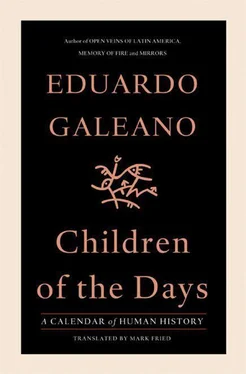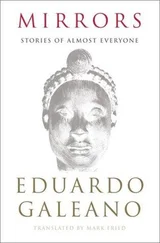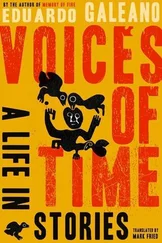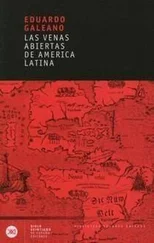Three thousand seven hundred years ago the king of Babylonia, Hammurabi, set down in law the rates dictated by the gods for medical services:
If with his bronze lancet the physician cureth a man of a serious wound or an eye abscess, ten silver shekels shall he receive.
If the patient be a poor man, five silver shekels shall the physician receive.
If the patient be the slave of someone, two silver shekels shall his owner give the physician.
If a physician causeth the death of a free man or the loss of an eye, his hands shall be cut off.
If a physician causeth the death of the slave of a poor man, one of his own slaves shall the physician give him. If a physician causeth the loss of a slave’s eye, half the slave’s value shall he pay.April 10
April 8. THE MAN WHO WAS BORN MANY TIMES
On this day in 1973, Pablo Diego José Francisco de Paula Juan Nepomuceno María de los Remedios Cipriano de la Santísima Trinidad Ruíz y Picasso, more commonly known as Pablo Picasso, passed away.
He was born in 1881. It seems he liked it, because he kept being born and reborn.
In the year 2011 the population of Iceland said no for the second time to the International Monetary Fund.
The Fund and the European Union had decided that Iceland’s three hundred twenty thousand inhabitants should be liable for the bankruptcy of its bankers, for which each and every Icelander owed a foreign debt of twelve thousand euros.
Such socialism in reverse was rejected in two plebiscites. “The debt is not our debt. Why should we pay it?”
In a world unhinged by the financial crisis, this small island lost in the waters of the North Atlantic offered us all a healthy lesson in common sense.
April 10. MANUFACTURING DISEASE
Healthy? Unhealthy? It all depends on your point of view. From the point of view of the pharmaceutical industry, bad health can be very good.
Take shyness, for example. This character trait used to be acceptable, even attractive. That is, until it became an illness. In the year 1980 the American Psychiatric Association decided that shyness was a psychological ailment and included it in its Manual of Mental Disorders , which is periodically updated by the high priests of Science.
Like all illnesses, shyness requires medication. Ever since the news broke, Big Pharma has made a fortune selling hope to patients plagued by this “social phobia,” “allergy to people,” “severe medical problem”.
On this day in the year 2002, a coup d’état turned the president of a business association into the president of Venezuela.
His glory did not last long. A couple of days later, Venezuelans filling the streets reinstated the president they had elected with their votes.
Venezuela’s biggest TV and radio networks celebrated the coup, but somehow failed to cover the massive demonstrations that restored Hugo Chávez to his rightful place.
Unpleasant news is not worth reporting.
April 12. MANUFACTURING THE GUILTY PARTY
On a day like today in the year 33—a day earlier, a day later — Jesus of Nazareth died on the cross.
His judges had found him guilty of “inciting idolatry, blasphemy and abominable superstition.”
Not many centuries later, the Indians of the Americas and the heretics of Europe were found guilty of those same crimes — exactly the same ones — and in the name of Jesus of Nazareth they were punished by lash, gallows, or fire.
April 13. WE KNEW NOT HOW TO SEE YOU
In the year 2009, in the atrium of the convent of Maní in the Yucatán, forty-two Franciscan brothers held a ceremony of restitution for injuries caused to indigenous culture.
“We ask forgiveness of the Maya people, for not having understood their worldview, their religion, for denying their divinities, for not having respected their culture, for having imposed over many centuries a religion they did not understand, for having treated as satanic their religious practices, and for having said and written that these were the work of the Devil and that their idols were Satan himself in the flesh.”
Four and a half centuries before, in that very place, another Franciscan brother, Diego de Landa, had burned the Mayas’ books, and with them eight centuries of collective memory.
April 14. GRAND OR JUST PLAIN BIG?
In the year 1588 Spain’s Invincible Armada , then the largest fleet in the world, was defeated in a matter of hours.
In the year 1628 Sweden’s most powerful warship, the Vasa , also known as Invincible , sank on its maiden voyage. It never made it out of Stockholm’s harbor.
And on the night of this day in 1912, the world’s safest and most luxurious ocean liner, humbly named Titanic , hit an iceberg and went down. This floating palace had few lifeboats, a uselessly small rudder, watchmen without binoculars and warning bells that were never heard.
April 15. THE BLACK PAINTINGS
In 1828 Francisco de Goya died in exile.
Harassed by the Inquisition, he had fled to France.
On his deathbed, between incomprehensible mutterings, Goya spoke of his beloved home on the outskirts of Madrid, on the banks of the Manzanares River. There, painted on the walls, was the best of his work, his most personal.
After his death the house was sold and resold, paintings and all, until the works were finally removed from the walls and transferred onto canvases. In vain they were put up for sale at the Paris Exposition. No one wanted to see, much less buy, those ferocious prophesies of the century to come, in which grief slaughtered color and horror shamelessly revealed its raw face. The Prado Museum did not wish to buy them either, and at the beginning of 1882 they entered its halls by donation.
The “black paintings” are now among the most visited in the museum.
“I painted them for myself,” Goya said.
He did not know that he painted them for us.
April 16. THE FLAMENCO SONG
In the year 1881, Antonio Machado y Álvarez completed his anthology of flamenco songs, nine hundred couplets from the Gypsy songbook of Andalusia.
In olden days tasteless
were all the waves in the sea ,
then she spit, my dark-skinned dearest
which was when they turned salty .
Girls with dark complexion
have a gaze that is so weird ,
it kills more in a single hour
than death in an entire year .
The day that you were born
a piece of heaven fell to earth .
Not until you cease to live
will heaven regain its girth .
He published the book and the critics panned it. Flamenco’s cante jondo evoked their scorn, because it was the work of Gypsies. But that’s precisely why these couplets carry their music with them, in their clapping palms and in their stamping feet.
April 17. CARUSO SANG AND RAN
On this night in 1906, tenor Enrico Caruso sang Carmen at the Tivoli Opera House in San Francisco.
The ovation carried him all the way to the door of the Palace Hotel.
The master of bel canto slept poorly. As dawn was about to break, a violent tremor knocked him from his bed.
The earthquake, the worst in California history, killed more than three thousand people and demolished half the city’s homes.
Caruso started running and did not stop until he got to Rome.
April 18. KEEP AN EYE ON THIS GUY
Читать дальше












